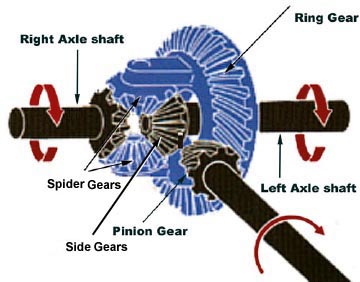jasandunlop
Test Drive
- Location
- Cumming, GA
Noticed a strange clicking sound in the left rear of my 2010 SE 4X4 after trying to pinpoint the cause of some pretty significant cabin noise between 10-20MPH (truck has 96K miles and is out of warranty). As speed increases, I don't necessarily think the sound goes away but is muffled by wind, traffic, and tires. Put the rear on jack stands, pulled tires and put the truck in gear to take a video with sound, clicking still present. Pulled calipers and rotors, clicking still present. After researching parts and the apparent propensity for Xterra differential problems, I decided to drain the differential (just changed <10,000 miles ago) and found a bunch of metal on the drain. When I changed the diff fluid previously, the magnet was very clean. I'm a DIY'r but have zero experience with the rear differential, other than changing the fluid. I pulled the cover off the rear diff, hoping that if anything was wrong, it would be blatantly obvious. Put the truck in neutral and turned the wheel to get a good look at everything but didn't see anything obvious. Right now I'm thinking about ordering the left rear axle shaft assy; it includes the bearings and is pretty much plug and play (after getting the old one out). The shaft assy is ~$320, which isn't peanuts but is cheaper than the entire axle @ ~$2K. Going to try and attach a couple of videos, one of which was taken last night after I put the rotor and caliper back on. Video identifies the sound at the left rear wheel well, shows reduction in sound as the camera moves from the outside of the wheel well towards the differential, and also shows the sound inside the cabin. Second video is of the differential with the cover off, I didn't see anything wrong but maybe someone with more experience can highlight something (I hope not). Also attached a pic of the drain and magnet with metal shavings (why? I don't know). Videos were much to large @ 127meg, so here are the locations on YouTube
Rear-end noise https://www.youtube.com/watch?v=iT3LMgSaryQ
Differential https://www.youtube.com/watch?v=Erjmybzmpec
![IMG_1449[1].jpg IMG_1449[1].jpg](https://www.xterranation.org/data/attachments/2/2498-71d6666a6729fdc76428eeed82c2a278.jpg)
Rear-end noise https://www.youtube.com/watch?v=iT3LMgSaryQ
Differential https://www.youtube.com/watch?v=Erjmybzmpec
![IMG_1449[1].jpg IMG_1449[1].jpg](https://www.xterranation.org/data/attachments/2/2498-71d6666a6729fdc76428eeed82c2a278.jpg)




